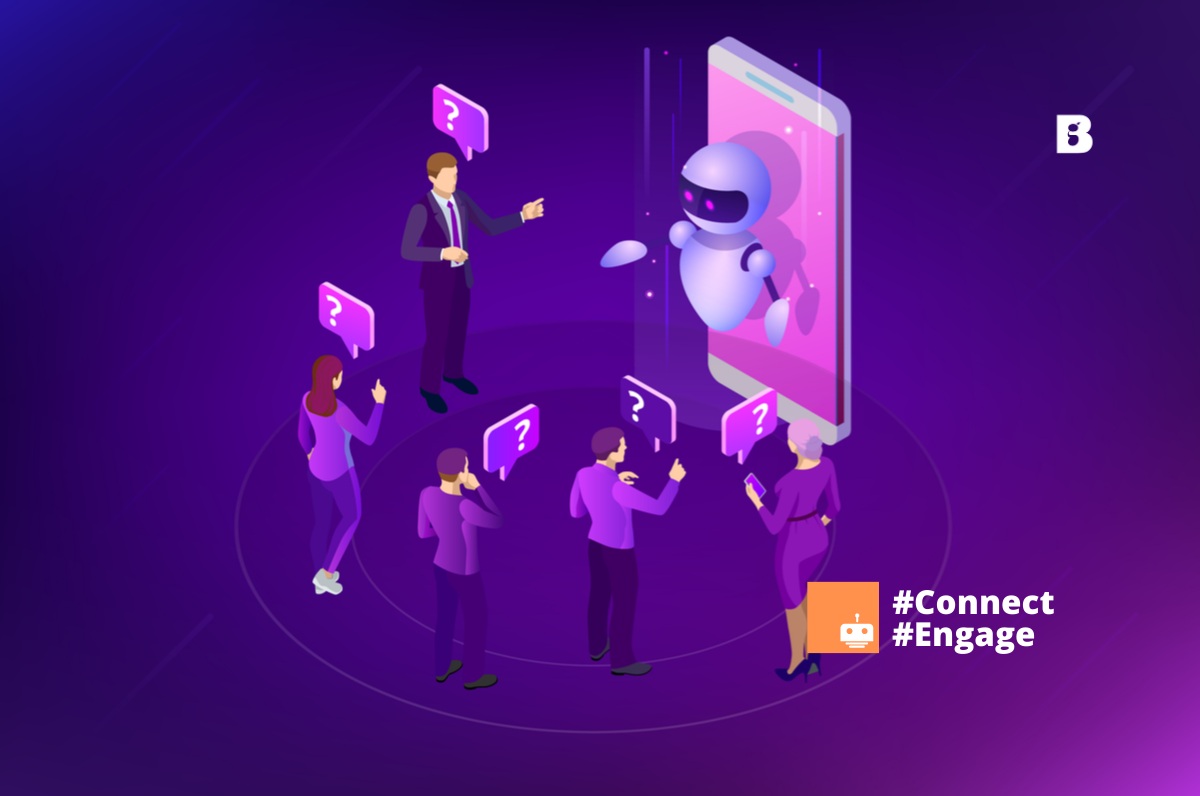The idea of using bots in business is no longer a concept but a reality. While some are afraid bots will ultimately remove jobs from the market, the numbers are telling a different story. When done correctly, bots, especially chatbots, bring increased efficiency and productivity while ensuring better customer experiences. Helping humans do their work better than before.
So, what is a chatbot exactly? And how do they fit within the framework of your company? Also, how do chatbots work? We answer these questions and more in our 2020 Guide to Everything Chatbots. Let us explore.
Entering the World of Chatbots
When first entering the world of chatbots, it is essential to answer the question, “What is a chatbot?” A chatbot is a software that performs an automated task. You can quickly achieve tasks such as answering frequently asked questions or assisting in a workflow with the help of a bot. Chatbots use live online chat platforms or social media to communicate with customers. Over time, the chatbots improve their performance by using artificial intelligence (AI) and machine learning.
There is some confusion surrounding the true definition of a chatbot because of the variety of types and uses. Simply put, a chatbot is a software that can have conversations with humans. But it is what you specifically ask of it that makes it complicated. There are three main types of chatbots:
- Scripted Chatbots: Determine the behavior of the bot with rules.
- Intelligent Chatbots: Artificial intelligence techniques drive this specific type of chatbot.
- Application Chatbots: A chatbot with a graphical user interface, which could be an intelligent bot or a scripted bot.
Before you decide which chatbot is best for your business, there is still a lot to know— understanding the data behind the technology and how it has impacted businesses before you will assist you in your decision and add to your knowledge arsenal. The projected chatbot adoption growth is 276 percent by 2020, with 88 percent of CX professionals believing AI will enhance, not replace, humans in the workplace. Approximately 90 percent of businesses report faster complaint resolutions by using chatbots, and 57 percent of companies agree that bots deliver a sizable return on investment with little effort.
Implementing Your Chatbot
Even with much of the data showing positive trends, there is a learning curve when implementing the technology. The expectations are usually high, but without a clear road map of the implementation process, delivering results can be difficult. Below are a few helpful hints for implementing a chatbot app successfully.
- Start with a goal in mind: Plan for what you want the chatbot to complete. Once you build this foundation, approach decisions from your customer’s perspective and design around that.
- The tone of voice: Your bot is like another employee of your company. You want its personality to reflect your brand and company culture. Different visitors will have differing opinions of the bot, but what matters most is creating a precise balance between the human and robotic nature of the platform.
- Make it accessible: Reach audiences far and wide by making your chatbot available to various populations. You can do this by ensuring your bot can provide communication in languages other than the primary language on your website. Additionally, audio descriptions, text for any non-text content, fonts, and color contrast should be a part of any website or platform, including your chatbot.
- Monitor metrics: Collecting data on the resolution rate of your chatbot and customer satisfaction is vital to the success of your bot and helpful in future considerations.
Chatbot Online: Going Beyond Social Media
Social media is a way to personally connect with your audience by interacting via posts, comments, and even chat. But not everyone has social media. Social media may limit the conversation capabilities, while a chatbot is fully customizable to meet the needs of your audience and your business.
The benefits of chatbots go beyond the perks of social media alone. Lead generation becomes easier due to the inherent intimacy of chatbots. Your conversion rates can improve while you enhance your lead qualifications and increase cost-efficiency. The customer experience you provide is unparalleled when compared to the competition who do not use chatbots. You can save time and money while delivering frictionless support to your customers from anywhere at any time.
Exploring the Chatbot Risks
Like any new advanced technology, there are risks in chatbots. It is a good idea to have a thorough understanding of cybersecurity threats, concerns, and vulnerabilities. Chatbot cybersecurity risks can include one-time events such as malware and DDOS attacks, as well as gaps in the system that open the door to cybercriminals. These gaps may be unencrypted communications, back-door access by hackers, lack of HTTP protocol, no security protocol at all, or hosting platform issues.
Beyond any cybersecurity concerns comes the worry of losing the human touch. Although fast, automated replies to pressing questions can satisfy your customers, it is always a good idea to give them the option not to use the bot or escalate the issue to a human agent. Research shows about 86 percent of customers believe there should be an escalate to an agent button when talking with a chatbot. It is unrealistic to think that a machine can match human understanding.
It is okay not to have every problem resolved with a chatbot, but if you do not have a backup plan, your chatbot could potentially backfire.
The Best Chatbot Options for Your Business
Choosing a chatbot for your business is no small feat, and with a plethora of options out there, feeling overwhelmed is expected. Here are a few of the best chatbot options for your business in 2020.
- Azure Bot Service: With Microsoft’s Azure Chatbot Service, you can develop intelligent, enterprise-grade bots to help enrich your customer experience and maintain in control of your information. Users can build any bot that they need, including a question and answer bot or a company-branded virtual assistant.
- MobileMonkey: MobileMonkey’s OmniChat software is a multi-platform chatbot builder. Users can stay connected with customers by sending instant messages in apps they already use.
- FreshChat: FreshChat is a customer messaging software that helps companies engage with their customers wherever, whenever through the web, mobile, and social messengers.
If choosing a pre-designed platform seems confusing or just not the proper fit for your company, the experts at Bauen Solutions are ready to help. We help companies solve complex business problems, helping build custom software solutions that meets your needs and fits your budget.





